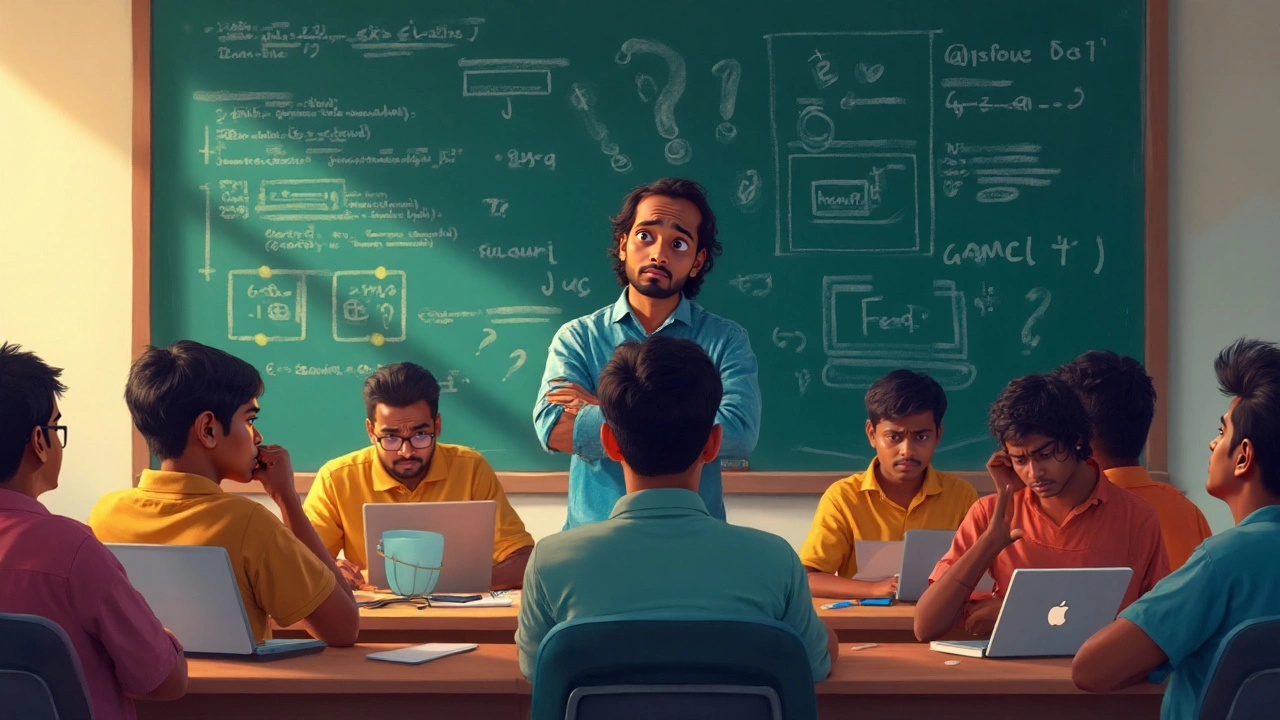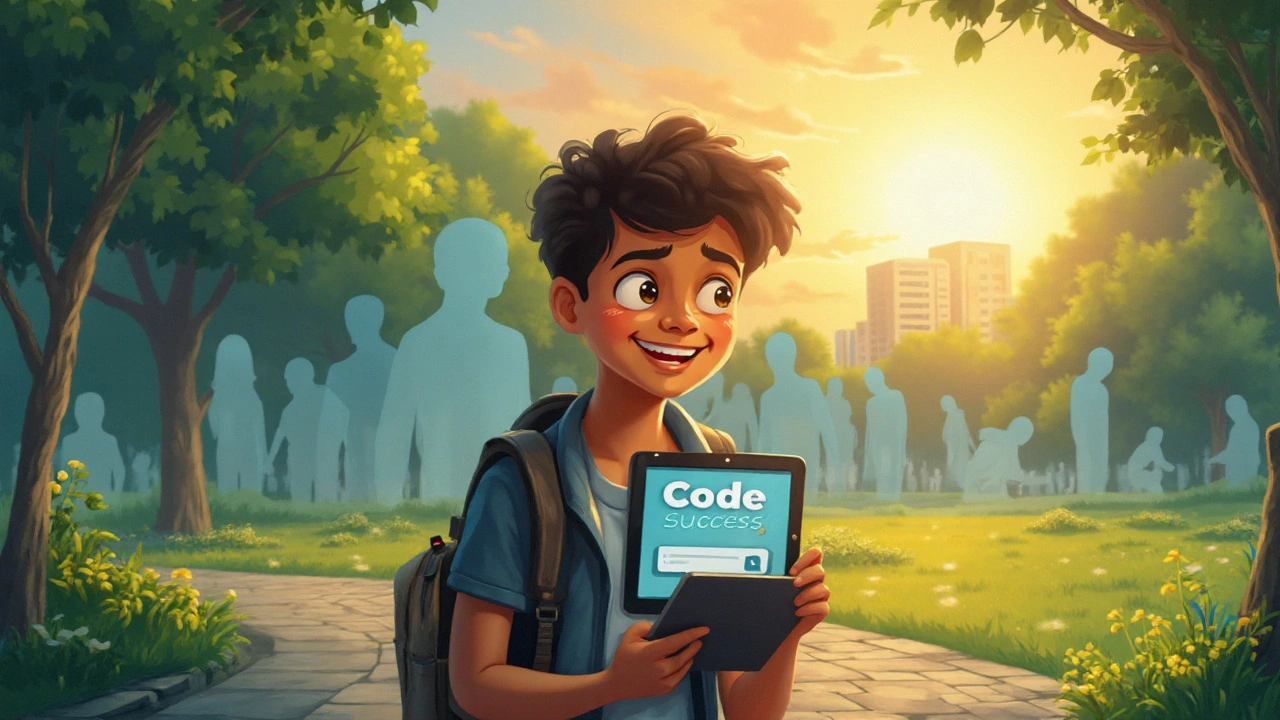Imagine spending weeks hunched over a laptop, poking at lines of code, but the screen keeps throwing errors back like a stubborn toddler hurling food. You’re not alone. More than half of the people who start to learn coding give up within the first six months. Not because coding is rocket science—NASA trains people with all kinds of backgrounds—but because the path to getting it just feels so rough, unwelcoming, and endless. Isn’t it wild that something behind today’s biggest careers and innovations remains such a daunting Mount Everest for beginners? If you ever wondered why people who desperately want to code keep dropping off, buckle up. Let’s unravel how this happens, what really blocks folks from making it, and how you don’t have to be another dropout statistic.
The Hidden Myths That Hold Back Beginners
The first wall most folks slam into is the pile of myths people lug around even before typing a single curly bracket. Watch any online forum, and soon you’ll spot the same stories: “You have to be a math genius,” or “Real programmers started at age 12.” All this noise does is crank up anxiety. Here’s the secret: studies from Code.org and Stack Overflow show up to 60% of the world’s professional coders didn’t learn coding in childhood—they switched in college or their 20s. In fact, some had no STEM background at the start. Coding isn’t about superhuman IQ; it’s mostly about grit and pattern-spotting.
Yet, those myths are hard to shake off. That nagging fear of not being cut out for it—imposter syndrome—is up to five times stronger among tech newbies than experienced coders, according to a 2023 survey by Coding Sans. The human brain likes to justify discomfort: "Maybe I just can't do it." Instead of trying different methods, folks bail at the first roadblock, believing it wasn’t meant for them. The key trick? Talk to real people who learned coding later in life. Their stories bash down stereotypes and show there’s no golden path—just sticking with it long enough.
Another powerful myth: "Once I memorize syntax, I’ll be fine." Guess what? Most successful coders Google things daily, even the simple stuff. According to JetBrains's Developer Ecosystem survey in 2024, 92% of working programmers check documentation or use Stack Overflow weekly. Learning to code is not about packing your brain with every possible loop or command. It’s about learning to use the toolbox efficiently—search, debug, and adapt—more than memorization.
Frustration Stacking: Small Failures Pile Up
Ever try fixing what seems like a tiny typo, hitting run, and—bam!—error messages. Suddenly, it spreads: one problem becomes two, then five. “Frustration stacking” is what happens when every little thing you don’t get amplifies the next. A Guardian study of UK coding bootcamp dropouts in 2022 blamed it on overwhelm—simple missed semicolons snowballing into the kind of massive bugs that make you want to throw your laptop out the window. Very few courses prepare you for this constant state of not knowing.
When learning to code, you spend most of your time outside your comfort zone. The truth? Even pros say they feel dumb about 60% of the day—they just keep going. Beginners, though, often interpret feeling lost as proof they can’t do it, rather than a normal part of learning. Tech journalist Clive Thompson once said, “To code is to struggle.” Feeling stuck is actually the default; getting unstuck is the real progress. But most resources gloss over this and focus on the finish line, hiding the messiness along the way.
If you want to beat the frustration, start tracking your tiny wins. Every single working ‘Hello World’ or fixed bug matters way more than you think, and it retrains your brain to see coding as more trial-and-error than pass/fail. Try keeping a ‘Victory Log’ of solved problems; it helps you remember, during tough days, that you are moving forward.

The Tutorial Trap and Passive Learning Pitfalls
It’s oddly satisfying to watch tutorial videos: you see someone create a game, a website, an AI chatbot—step by step, with soothing background music. It feels productive. But here’s something wild: the “tutorial trap” is a big reason newbies don’t lock in what they learn. Coursera’s 2023 Completion Report found that over 80% of first-year coding students watched at least ten hours of tutorials before ever building anything on their own; only 18% finished their project. Watching or copying code isn’t the same as typing and debugging solo.
This happens for two reasons. First, tutorials give the illusion of mastery because information is spoon-fed. The minute you close the video and the hand-holding stops, bam—blank page panic. Second, passive learning doesn’t build troubleshooting muscles. When you make something from scratch, you'll hit a dead end, Google stuff, try again, and those cycles create real skill.
Want to escape the trap? After each video, challenge yourself: build something similar, but change three things. Instead of a pet adoption site, try a bookstore. Instead of copying the sample calculator, upgrade it with style or new features. This forces your brain to wrestle, not just repeat.
Another hot tip: don’t obsess over finishing every course. Honestly, you’ll learn more from building a sketchy-looking, half-broken to-do app alone than gold-starring five tutorials. The badge is nice. Making something messy and working out your own bugs sticks with you longer.
Lack of Real-World Motivation and Goal Setting
One big mistake? Learning coding with no concrete use-case. People start “just to have the skill,” but that usually fizzles out. Human brains crave purpose. Ever notice how folks who build websites for their band, or automate a simple work task, stick with learning way longer? Real-world goals ground your motivation. Harvard’s 2023 Learning Outcomes Review showed students who built coding projects for personal use were 2.4 times more likely to become actual programmers than those who learned “just in case.”
So, don’t just “learn Python” or “do a course.” Give yourself a quest. Maybe you want to make a bot that texts the weather, or a website for a side hustle. Once you have a mini mission with heart, every struggle along the way feels like a puzzle to solve—not a pointless obstacle. The urge to finish something real is way stronger than wanting a certificate.
One concrete approach: set “micro-goals.” Instead of promising to code for two hours—a recipe for burnout—set a goal like “Display a joke on a webpage” or “Sort a list alphabetically.” String together little mini-projects. Each finish line is a dopamine hit, and you’ll piece together actual skills faster than you’d expect.
Another thing: surround yourself with others who care. Join a Discord group, commit to #100DaysOfCode on social, or find a peer who’ll check in on your progress. That social element multiplies motivation like crazy. When you say your goal out loud, it gets real—and when someone checks in, giving up is suddenly not as comfortable as pushing through.

Information Overload and Picking the Wrong Path
Ever start a “learning to code” Google search and get hit with four million options? It’s brutal. There are sites promising “Full stack mastery in 100 days,” endless language choices (JavaScript, Python, Java, C++), and advice from every direction. Paralysis kicks in hard. According to freeCodeCamp’s 2022 user survey, new coders try switching languages or frameworks at least three times in their first month, losing more time context-switching than actually coding.
Picking too broad a path guarantees you’ll hit a wall. Here’s what works better: Choose one practical language (honestly, Python if you’re not sure), stick with a single beginner project, and ignore the rest for now. The fancy AI/VR/Blockchain landscape can wait. Get one simple web page, calculator, or data script working—then build on top.
Noise is also a killer: tutorials, blogs, YouTube all scream for your attention. Set ‘quiet blocks’ when you code—no switching tabs every two minutes. Use browser extensions like RescueTime or Cold Turkey to block distractions. The best coders aren’t the ones who know the most—they’re the ones who spend dedicated, distraction-free time wrestling with broken code.
Finally, map your path out—even if it’s scribbled on a sticky note. Plot the steps: basic syntax → small project → error fixing → next project. The journey should feel like checklists, not an endless, featureless ocean. As you move one small island to the next, confidence actually builds. And the big secret? Every “real” coder is usually just a bit ahead of you, making lists, knocking them out, googling the rest.
So, if you want to crack the code of learning to code, trust the struggle, set grounded goals, surround yourself with people who care, and lock in those tiny wins. The odds are with you—not against, once you stop believing the myths and stick to a real, small, messy practice.
